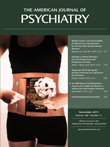Attention deficit hyperactivity disorder (ADHD) is a common, long-lasting, and highly impairing childhood-onset neuropsychiatric disorder. Cross-sectional (
1) and longitudinal (
2) studies have provided strong evidence to support the relationship between ADHD symptoms/diagnosis and educational attainment/academic achievement. Although more than a dozen prospective studies have examined such a relationship (
2), only two studies, which included both core symptoms (
3,
4) or ADHD subtypes (
4), attempted to distinguish the effects from inattention and hyperactivity symptoms. Lee and Hinshaw (
3) found that 5-year follow-up academic achievement was predicted only by inattention symptoms assessed at the ages of 6–13 years in both ADHD and comparison samples. Massetti et al. (
4) reported that the inattentive group in an 8-year follow-up study was more likely to have academic underachievement. However, the confounding effects from combined conditions of learning disability and internalizing symptoms were not controlled in their analysis. Because of high collinearity of inattention and hyperactivity/impulsivity symptoms, the effect of either core symptom may be partially explained by the other core symptom. It would be necessary to include the three symptom dimensions of ADHD in one study to examine the specificity of this relationship in order to help identify the possible mechanisms linking ADHD to educational outcome and to develop specific measures for prevention of school failure. However, because of the instruments used to assess ADHD symptoms, some prospective studies have only reported information on inattention symptoms (e.g., measured by the Teacher's Report Form [
5,
6] or Child Behavior Checklist [
6]), hyperactivity symptoms (e.g., measured by the Conners Rating Scales-Revised [
7] or Rutter “A” Health and Behavior Checklist [
8]), or ADHD diagnosis (e.g., references
3,
4,
9), preventing the authors from conducting further analysis of the unique effects of the two core symptoms. Investigation of the specificity of the association between ADHD symptoms and academic achievement that includes both inattention and hyperactivity/impulsivity symptoms in one study is needed. Only two prospective clinical-based studies have done so as yet, but neither study included enough controls for confounders (
3,
4).
In this issue of the
Journal, Pingault et al. (
10) prospectively assessed the unique, additive, or interactive contributions of trajectories of inattention and hyperactivity symptoms during elementary school years to educational attainment defined by official records of high school graduation by the ages of 22–23 years. The study has several notable strengths: a large sample size (2,000 children), a population-based sample, official records of high school graduation, and a longitudinal study design with developmental trajectory data from seven annually repeated measures of inattention and hyperactivity symptoms from kindergarten to sixth grade.
Using two symptom rating items and four items of teacher reports on the Social Behavior Questionnaire to assess inattention and hyperactivity symptoms annually from ages 6 to 12 years, respectively, the authors found that inattention during elementary school years significantly predicted a lower rate of high school graduation by early adulthood without additional or interactive contribution from hyperactivity symptoms. The significance of prediction from hyperactivity disappeared when inattention was taken into consideration.
This clinically relevant study is not without limitations. First, a rater bias may have occurred because the predictors, ADHD-related symptoms, for educational attainment relied on reports from the teachers, who may score inattention symptoms higher if their students have poorer school performance, which is highly correlated with later educational attainment. Second, in addition to a possible rater bias from teacher reports, we need to interpret the findings with caution because only two items were used to measure inattention symptoms, without complete assessments of the nine behavioral items described in the DSM-IV symptoms criteria for ADHD or objective measurement of attention tasks. Hence, a prospective study design (e.g., birth cohort) with clinical and laboratory assessments of inattention at preschool age and school age is needed to delineate the prediction of inattention with regard to educational attainment.
Pingault et al.'s findings that inattention at school age, regardless of the severity of hyperactivity symptoms, significantly predicts a lower rate of high school graduation imply that early detection and intervention for attention problems in young children before puberty are needed to offset possible adverse educational outcomes as they grow up. Parents with a child with inattention symptoms, regardless of his or her activity level or reaching or not reaching the diagnosis of ADHD, are recommended to seek professional assessment and intervention as early as possible. However, more research is needed to investigate whether intervention is effective in offsetting the adverse educational outcomes and to determine which intervention is most likely to be effective. Since some recent studies have suggested that hyperactivity and impulsivity reflect two dimensions and that impulsivity independently has more adverse educational outcomes than hyperactivity (
11), further research including three ADHD core symptoms, rather than only the inattention and hyperactivity symptoms tested in the Pingault et al. study, is warranted to assess the unique, additive, or interactive contribution of the three ADHD symptoms. Lastly, studies to determine whether pharmacological intervention, special education services, classroom behaviors, homework performance, parenting, family function, etc., mediate the pathway from ADHD symptoms to academic outcomes are needed to provide the data for developing prevention and intervention strategies for children with inattention symptoms or ADHD (
12).

